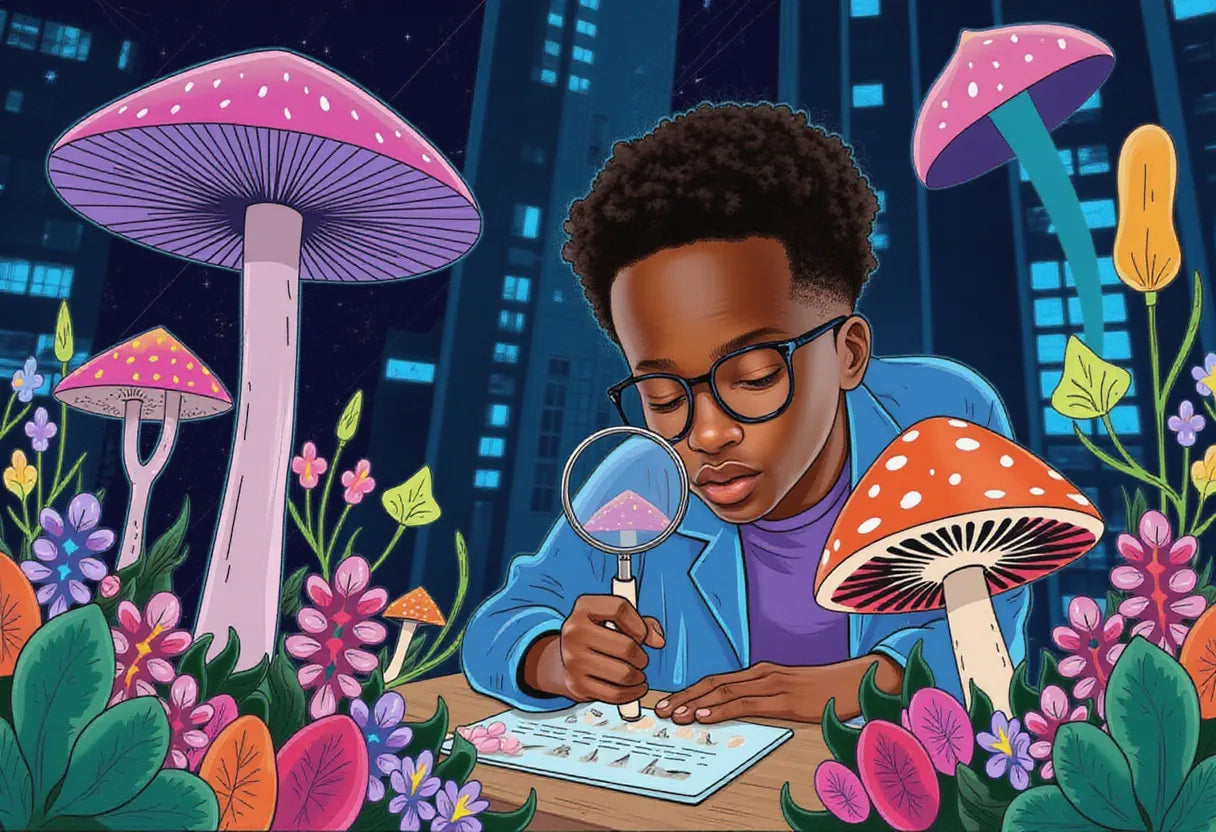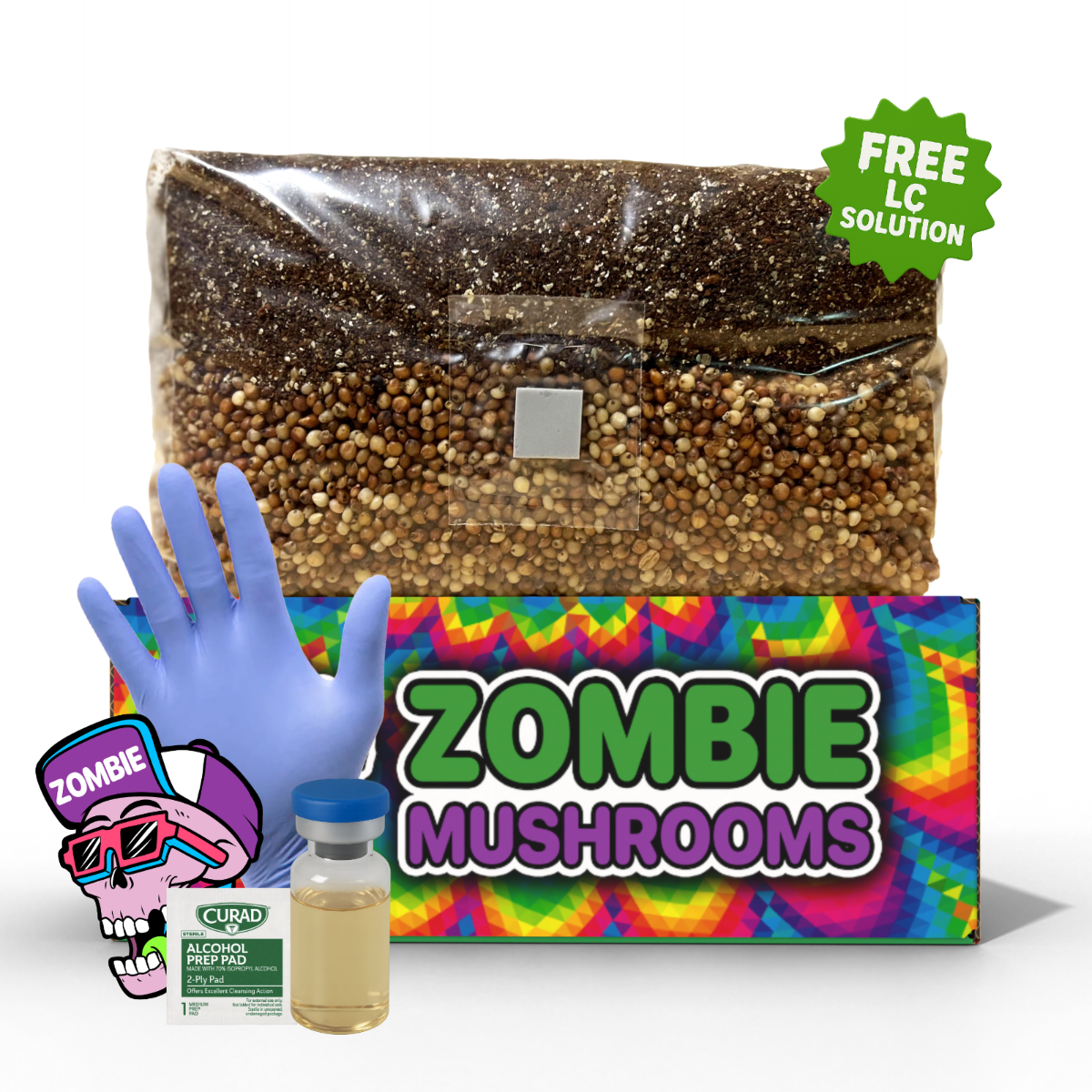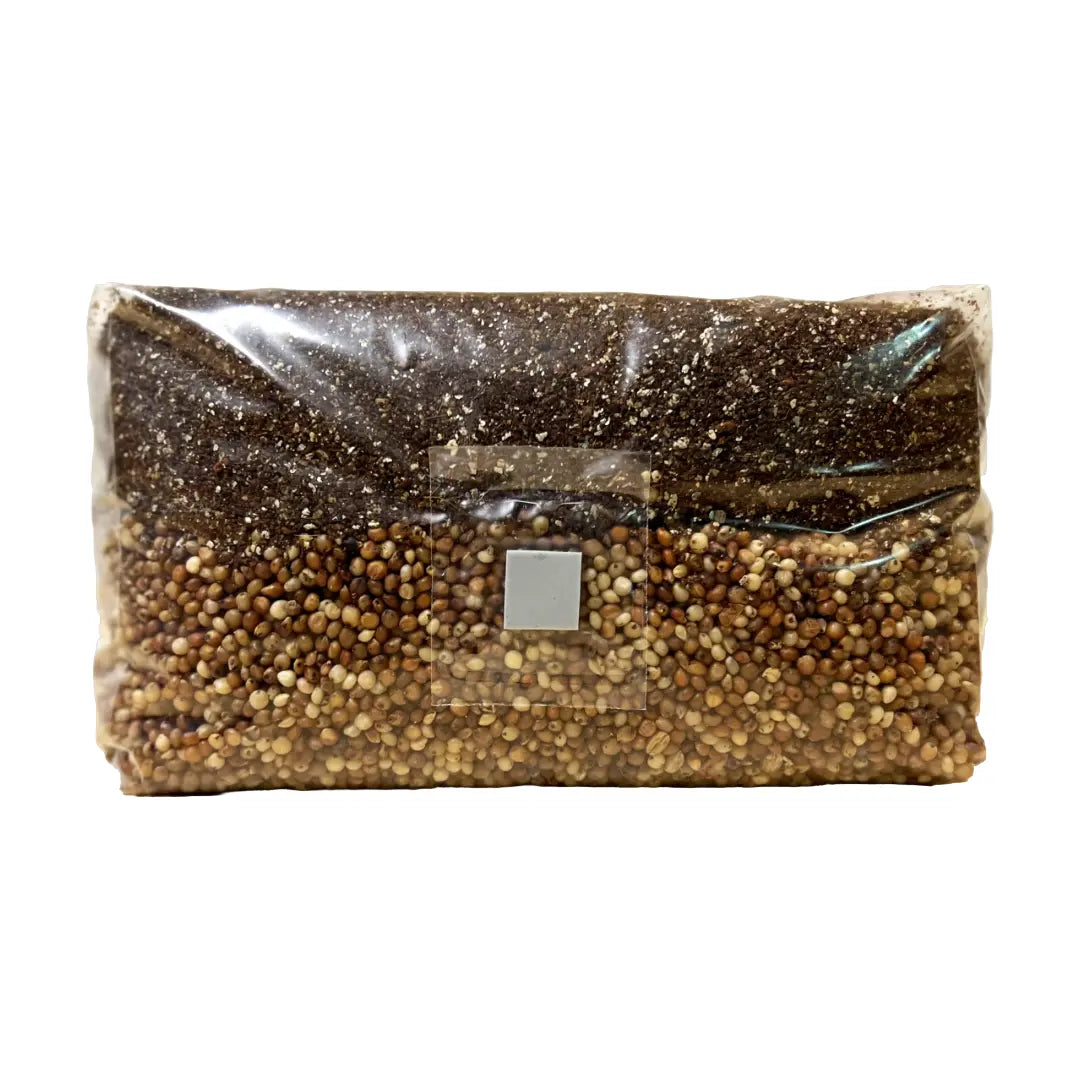⬇️ Prefer to listen instead? ⬇️
- Psilocybin decreases activity in the brain’s default mode network, changing consciousness and how people see themselves.
- Trials show psilocybin mushrooms can greatly lower symptoms of depression and anxiety.
- Bad trips and feeling upset are more likely with high doses or in bad surroundings.
- Current research and drug harm studies say psilocybin is not toxic and people don't get addicted to it.
- Legal access is growing. Some cities and US states no longer make personal use a crime or allow use with supervision.
Magic mushrooms have interested people for thousands of years. In the past, tribes used these psychedelic mushrooms in ceremonies. Now, they are a big topic when talking about mental health, feeling well, what is legal, and personal choice. As more people get interested, questions about safety come up. From careful preparation with tools like a mushroom grow bag to modern research studies, it’s important to know the facts about psilocybin mushrooms, what can go wrong, and what might help.
What Are Psilocybin Mushrooms (a.k.a. Magic Mushrooms)?
Magic mushrooms are a group of wild and grown fungi that have psilocybin in them. This is a natural compound that causes psychedelic effects. When you eat them, psilocybin turns into psilocin. Psilocin acts on serotonin receptors in the brain. This causes changes in what you sense and how you think.
The most common magic mushroom type is Psilocybe cubensis. But there are over 200 types around the world that can change how you think. Other types include Psilocybe semilanceata, Psilocybe cyanescens, and Psilocybe azurescens. People often spot these mushrooms by how they look. They have brownish caps, turn blue when bruised, and like damp areas like wet fields or forest floors.
People call them "shrooms," but they are also part of studies on drugs, how cultures use plants, and how the mind works. Different types grow naturally in North and South America, Europe, Asia, and Australia. This makes them one of the most common natural psychedelics found in many parts of the world.
How Magic Mushrooms Have Been Used Over Time
Psilocybin mushrooms have a long history with people. Old findings suggest people used psychedelic mushrooms as far back as 9000 BCE. Cave paintings in Algeria show figures holding mushroom-like things during special events. People think this shows early use in spiritual or religious ways.
In places like Mexico and Central America, groups like the Aztec, Mazatec, and Mixtec honored these fungi. The Aztec word teonanácatl means “flesh of the gods.” This shows how much psilocybin mushrooms were part of their spiritual, healing, and fortune-telling ways. Shamans would eat them to talk to gods, figure out sicknesses, or see future events.
But after people from Europe arrived and Christianity spread, people stopped using psilocybin by force. Spanish settlers said the local ceremonies with plants that change thinking were wrong and bad for the Christian faith. This stopping of use lasted for hundreds of years. It almost made people in the Western world forget the old knowledge about mushrooms.
Knowing about these mushrooms came back in 1957. An American banker and expert on mushroom use in cultures, R. Gordon Wasson, took part in a Mazatec mushroom ceremony in Oaxaca. Maria Sabina, a well-known healer, led the ceremony. Wasson wrote about it in Life Magazine. This article brought magic mushrooms to the Western world. And then, over the next few years, more research into psychedelics began.

How Magic Mushrooms Work on the Brain
Magic mushrooms mainly affect the brain through psilocin. Psilocin is what psilocybin turns into when eaten. Psilocin looks like serotonin (5-hydroxytryptamine). Serotonin is a chemical in the brain that helps control mood, thinking, sleep, and what we sense. So, psilocin mostly connects to 5-HT2A serotonin receptors in the outer part of the brain.
A study from 2012 using fMRI showed that psilocybin lowers activity in main brain areas, like the Default Mode Network (DMN). The DMN is important for thinking about yourself, your sense of who you are, and your constant thoughts. When this network is less active, people often say they feel their sense of self fade away. They might feel a sense of being one with everything.
And at the same time, psilocybin makes brain areas that don't usually talk to each other connect more. This extra connection across brain areas might explain the clear changes in senses, strong feelings, and new ways of thinking that happen during a trip.
Looking at the brain, the psilocybin experience is not so much about turning the brain on or off. It's more about changing how its parts connect. This creates a state where thinking and feelings are more flexible. This might be why the mushrooms can help treat certain conditions.

What It Feels Like: Effects of Psilocybin Mushrooms
How psychedelic mushrooms feel depends a lot on the dose, how the person felt before taking them, and the place they are in. A typical experience goes through a few clear steps
Onset (30 to 60 minutes)
- Small changes in what you sense
- Feeling tingling or crawling on the skin
- Noticing your surroundings more
Peak (1 to 3 hours)
- Clear visions (shapes, patterns, and colors)
- Sounds might seem changed, or you might mix senses (like seeing sounds)
- Time doesn't feel normal
- Strong feelings, which can be very happy or briefly worrying
- Feeling like you are not yourself, or feeling connected to nature
Comedown (3 to 8+ hours)
- Slowly coming back to normal
- Feeling a pleasant lingering effect or tiredness
- You might have new thoughts about yourself
Many people say magic mushrooms make them feel happy or give them insights. However, others might have a “bad trip.” This means feeling scared, paranoid, or overwhelmed. Taking care with your mindset and surroundings—discussed below—is key to getting the most good from them and having less trouble.
Are Magic Mushrooms Safe? What Science Says About Harm and Dependence
Science papers often put psilocybin mushrooms among the safest drugs to use for fun compared to others. Unlike opioid drugs, stimulants, or man-made substances, they are not very toxic at all. A study in 2010 by Nutt et al. in The Lancet looked at how much harm different drugs cause to users and society. Psilocybin mushrooms were among those that caused the least harm.
Also
- Psilocybin doesn't make you want to use it again and again, which causes addiction.
- No one has reported dying from taking too much pure psilocybin mushrooms.
- Your body quickly gets used to it (if you use it several days in a row). This stops people from using it constantly.
But being safe doesn't mean no risk. Your body is mostly safe, but there can be mental risks. This is especially true in places you can't predict or for people who have certain mental health issues.

The Downside: Possible Bad Physical and Mental Effects
The most common problems from psilocybin mushrooms are not physical. They are mental. These can include
- Feeling very confused or worried
- Seeing things you don't want to see, or scary visuals
- Quick changes in mood and thinking
- Being afraid you will lose control or go crazy
Physical problems are usually not serious. They include
- Feeling sick to your stomach
- Feeling dizzy or lightheaded
- Pupils getting bigger and heart beating faster
About mental health, psilocybin might make serious conditions worse. If you have schizophrenia, bipolar disorder, or these issues run in your family, it is best not to use mushrooms. They could bring on hidden symptoms.
One thing to know about is “HPPD” (Hallucinogen Persisting Perception Disorder). This is rare. It means people keep seeing things differently even after the drug is gone. Even though it doesn't happen often, it shows you need to be careful and know the facts before using.
Risks of Mixing Psilocybin with Other Substances
Using psilocybin mushrooms with other substances can make the effects harder to predict and raise risks. This is especially true when mixing with
- Alcohol: It makes the subtle experience dull and can make you feel sick or not have enough water in your body.
- Cannabis: Can make you feel more worried or get stuck on thoughts, especially with high amounts.
- SSRIs/MAOIs: These can stop psilocybin from working well. In very bad cases, they can cause serotonin syndrome. This is a dangerous problem with high blood pressure, confusion, and stiff muscles.
- Stimulants or other drugs that affect serotonin: These put more strain on your heart and nervous system.
How these things mix depends on your body and how much you take. But if you are new to mushrooms, it is best to keep it simple and be careful.

Therapeutic Potential: Can It Really Help Mental Health or Is It Just Hype?
Studies on psilocybin therapy in clinics look very hopeful. This is especially true for mental health problems that don't get better with usual treatments. Universities like Johns Hopkins, Imperial College London, and NYU have done careful studies.
Studies reviewed by experts show that psilocybin can
- Lower symptoms of major depression
- Help people who are very sick and dying worry less
- Help people stop smoking or drink less alcohol
- Help with PTSD symptoms by working through past bad events in therapy
In these studies, people usually take 1–2 doses that are not too small or too big. They do this in a supervised place with support from a therapist. This controlled way of doing things is very different from using them for fun. It helps explain why many people in these studies say they feel better and have powerful experiences.
The US FDA called psilocybin a “Breakthrough Therapy” for depression in 2019. This status is for treatments that show they are much better than current options. This could mean drugs get approved faster and maybe become a common part of mental health care.
Legal Status: Where Are Psychedelic Mushrooms Legal or Not a Crime?
Many people now support using psilocybin mushrooms. But in the US, they are still called Schedule I drugs under the Controlled Substances Act. This law says they have no medical use and a high chance of being misused.
But things are changing fast
United States
- Oregon was the first state to make supervised psilocybin therapy legal.
- Colorado allows controlled use through a law voters approved called the Natural Medicine Health Act.
- Cities including Denver, Oakland, Santa Cruz, and Ann Arbor have made owning small amounts for yourself not a crime. This means police won't focus on it.
International
- Netherlands lets stores sell "truffles" that have psilocybin.
- Portugal made owning all personal-use drugs not a crime.
- Jamaica and Brazil do not have laws that specifically ban psilocybin mushrooms.
- In other places, like parts of Southeast Asia and Europe, laws are often strict. You can go to jail for it.
The legal situation is changing all the time. To get the most current information, look at new laws, clinic studies, and local votes.

Key Differences: Magic Mushrooms vs. Functional Mushrooms
Magic mushrooms are known because they contain psychedelic compounds. But they are very different from the legal mushrooms sold for health that are popular now.
| Feature | Magic Mushrooms | Functional Mushrooms |
|---|---|---|
| What's Active | Psilocybin | Beta-glucans, triterpenes, polysaccharides |
| What They Do | Change how you think | Support your immune system, brain, and energy levels |
| Legal Status | Often limited | Legal and easy to find |
| How They're Used | For spiritual reasons, mental health help, or fun | Used daily for wellness or in cooking |
For example:
- Tiger Milk Mushroom (Lignosus rhinocerus): People in Southeast Asia have used this for a long time for breathing problems and swelling.
- Enoki Mushroom (Flammulina velutipes): This has many antioxidants and is common in Asian cooking.
- Reishi Mushroom (Ganoderma lucidum): Known to help the body handle stress; people often make tea from it.
If you grow mushrooms at home and want them to be legal, useful, and easy, you might like growing these functional mushrooms. They don't cause a trip.

“Set and Setting” — Why Your Experience Depends on the Place and Your Mind
“Set and setting” are key ideas for using psychedelics safely. Timothy Leary, who studied psychedelics, first used these terms. They show how your state of mind (set) and the place you are in (setting) affect what your trip is like.
- Set is how you feel, what you expect, bad things that happened to you before, and why you are taking the mushrooms.
- Setting is the place you are in, who is there, and things like the light, music, and if someone is there to help you.
To lower harm
- Pick places that feel safe and calm.
- Stay away from crowded or messy places—especially if you take a lot.
- Think about having someone who is not tripping with you. They can help or make you feel better.

Responsible Use and Ways to Lower Harm
Having an experience with psilocybin can feel very deep and life-changing. But it is important to put safety first
- Test your mushrooms. You could get very sick or die if you eat a toxic mushroom by mistake.
- Start with a small amount. Taking a low dose (0.5–1g dried) helps you see how your body reacts.
- Don't use if you are at risk. Mental illness, heart problems, and certain medicines make it more risky.
- Use with someone who is not tripping or a guide. This is extra important for your first trip.
- Don't trip by yourself. Being alone can make confusion or worry worse.
- Take time afterward. Give yourself time to rest and think about what happened before going back to normal life.

The Future of Psilocybin: What's Happening in Medicine, Law, and Culture
More and more people in science, therapy, and culture are getting interested in psilocybin. Things that look likely for the future include
- Microdosing: Taking very small amounts (~0.1g) that don't cause a trip. People hope this helps with creativity or mood. Studies are being done, but most evidence is from people talking about their experiences.
- Mainstream medicine: The FDA could approve psilocybin therapies in the next ten years.
- Cultural changes: Psilocybin ceremonies, retreats, and online groups are changing how people in the Western world see plant medicine.
- Money for psychedelics: New companies and investors are putting a lot of money into ways to offer regulated treatments that can help many people.
But what happens next will depend on more studies, making it available in a good way, and people talking about it with good information.
Should You Think About Using Magic Mushrooms?
Deciding to use psilocybin mushrooms is a big step. It should not be taken lightly. Science says they are safe and helpful in some situations. But they are still powerful and can cause big changes. The best way to use them is with knowledge, care, and honesty.
If you want help with mental health issues, look for trained psychedelic therapy providers when they become available in your area. If you are more interested in feeling well at home, look into functional mushrooms like tiger milk, Enoki, and Reishi. They can help your body and mind and are legal and safe.
Maybe you are interested in how it affects the mind, or maybe you just want to grow mushrooms you can eat. It's good to be curious. But you also need to be responsible.
Citations
- Carhart-Harris, R. L., Erritzoe, D., Williams, T., Stone, J. M., Reed, L. J., Colasanti, A., ... & Nutt, D. J. (2012). Neural correlates of the psychedelic state as determined by fMRI studies with psilocybin. Proceedings of the National Academy of Sciences, 109(6), 2138–2143. https://doi.org/10.1073/pnas.1119598109
- Discover Magazine. (2022). Magic mushrooms are expanding minds and advancing an emerging field of medicine. https://www.discovermagazine.com/mind/magic-mushrooms-are-expanding-minds-and-advancing-an-emerging-field-of



